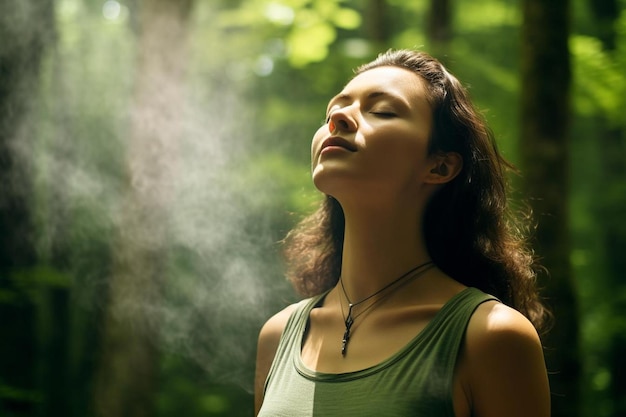Anxiety relief is an everyday companion in life’s challenges, and mindfulness provides a powerful method for those seeking recovery. Based on ancient practices, mindfulness is now used in modern psychology. It teaches us to accept the present moment clearly and without judgment. This practice allows individuals to gently observe their thoughts and feelings, enabling them to cope with stressful situations.
This article examines five essential mindfulness techniques for beginners: deep breathing exercises, body scan meditation, grounding techniques, mindful walks, and non-judgmental acceptance. Each technique is designed to foster inner peace and enhance psychological well-being.
What is Mindfulness?

Mindfulness is a powerful practice that plays an essential role in coping with anxiety by fostering present-second attention and cultivating a non-judgmental attractiveness of our minds and feelings. At its centre, mindfulness encourages us to consciously interact with our reviews, whether or not they’re high-quality, unpleasant, or impartial, without getting entangled in a cycle of overthinking or emotional reactivity.
When we exercise mindfulness, we learn to take note of the present moment without dwelling on past regrets or stressful approximately future uncertainties. This gift-second consciousness is a buffer against the steady movement of worries and anxieties that often plague our minds. By specialising in what’s taking place right now, whether or not it’s the feeling of our breath, the points of interest and sounds around us, or the emotions in our bodies, we can steadily detach from the grip of tension-inducing thoughts.
5 Empowering Mindfulness Techniques for Beginners:
Deep Breathing Exercise
Deep breathing is a fundamental mindfulness method because of its profound ability to appease the mind and alleviate stress. In the hustle and bustle of cutting-edge life, strain frequently accumulates, causing anxiety. Deep respiration is a simple but effective technique to counteract these results, promoting an experience of calm and intellectual readability.
Step-by-Step Guide:
- Find a Comfortable Position: Sit or lie down in a comfortable position. Close your eyes or maintain a tender gaze.
- Inhale Deeply: Slowly inhale through your nose, allowing your abdomen to rise as you fill your lungs with air. Aim for a deep, diaphragmatic breath rather than shallow chest respiration. Feel the breath expanding in your belly.
- Hold for a Moment: Pause briefly at the top of your inhale, noticing the sensation of fullness and presence.
- Exhale Slowly: Release the breath gently and thoroughly via your mouth or nostril, letting your abdomen fall naturally as the air leaves your lungs. Focus on the sensation of letting go.
- Repeat: Continue this deep respiratory sample for several breaths, preserving a steady and comfortable tempo. Each cycle should last about four to six seconds for inhaling and six to eight seconds for exhaling, but regulate in step with your consolation.
Benefits of Deep Breathing:

Deep breathing promotes bodily relaxation and cultivates mindfulness. It trains the mind to focus on the breath, anchoring interest in the present moment and reducing the grip of aggravating thoughts. Regular exercise enhances one’s ability to manage stress successfully throughout the day, fostering a sense of inner peace and resilience.
Body Scan Meditation
Body experiment meditation offers a profound technique to decorate self-recognition and alleviate anxiety, making it a valuable tool in the pursuit of mindfulness. This exercise entails systematically directing your attention to distinct components of your frame, from head to toe, in a mild and non-judgmental manner. It’s particularly beneficial for beginners searching to quiet their minds and domesticate their present-moment consciousness.
To begin a body experiment meditation, find a comfortable role, sitting or mendacity down. Close your eyes and produce your awareness of your breath, allowing yourself to loosen up with each inhale and exhale. Start by directing your interest to the pinnacle of your head. Notice any sensations or tension in this region without trying to exchange them. Then, gradually pass your focus down via your frame—your forehead, eyes, cheeks, jaw, and so on—pausing briefly at each element to study how it feels.
Grounding Technique
Grounding strategies are sensible sports that anchor individuals to the present second, alleviating anxiety and promoting a balanced experience. These techniques are beneficial tools for handling stress in regular lifestyles.
One effective grounding technique is the sensory cognizance method, frequently known as the 5-4-three-2-1 approach. Begin by figuring out and acknowledging the following:
- 5 things you can see around you. Notice colourations, shapes, and textures in your instant environment.
- 4 things you can touch or feel. Pay attention to the sensations of objects or surfaces underneath your fingertips.
- 3 things you can hear in your surroundings.Focus on each remote and close-by sounds without judging them.
- 2 things you can smell in the air or nearby. Take a moment to inhale profoundly and discover any scents.
- 1 thing you can taste or have recently tasted. Bring attention to the flavour lingering in your mouth.
This sensory exercise helps ground your attention in the present second, anchoring you far away from demanding thoughts or feelings of weightlessness. Another grounding method entails mindful grounding, where you intentionally connect with the bodily sensations of your body touching the floor or a solid floor.
Mindful Walking
Mindful walking combines the benefits of physical pastime with mindfulness, providing a fresh way to connect to the present moment and decrease pressure levels. To practice conscious walking, discover a quiet and safe area to stroll without distractions. Begin by standing tall with a relaxed posture, feeling the ground under your feet. Take some deep breaths to centre yourself.
As you start taking walks, express your interest in every step’s sensations. Notice the movement of your toes, the shifting of your weight, and the subtle modifications to your surroundings. Engage all your senses; examine the attractions, sounds, and scents around you without judgment.
Benefits of Mindful Walking:
- Reduces Stress Levels: Walking mindfully can decrease cortisol levels and sell relaxation.
- Enhances Mindfulness: Improves your capability to live in the present and be centred on everyday existence.
- Increases Physical Awareness: Develops a more profound connection among your body and mind.
Mindful Acceptance and Non-Judgment
Mindful recognition includes acknowledging and embracing our thoughts, emotions, and reviews without labelling them properly or as horrific. It fosters a compassionate attitude in the direction of ourselves and others, which is vital for managing anxiety and selling emotional well-being.
To domesticate mindful attractiveness, begin by gazing at your thoughts and feelings with curiosity and openness. Instead of reacting to them immediately, permit them to arise and bypass. Notice any dispositions to judge or criticise yourself, and alternatively practice imparting kindness and information.
Non-judgmental attention encourages us to look at things as they are without enforcing our expectations or alternatives. It involves letting go of the desire to govern or trade our reports, which could relieve the stress and tension of striving for perfection.
Achieve inner peace through mindful techniques.
Mastering those five empowering mindfulness techniques for beginners may be your key to powerful anxiety relief. By embracing deep breathing, body test meditation, mindfulness on foot, and the exercise of non-judgmental focus, you may cultivate a profound sense of calm and resilience. These techniques help decrease tension and foster a deeper reference to the present second, enhancing your general well-being.
Start your journey towards inner peace today with this realistic equipment. Contact us for more guidance on incorporating those techniques into your day-by-day routine. Take advantage of your mental fitness and discover the energy of mindfulness for anxiety relief.


